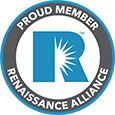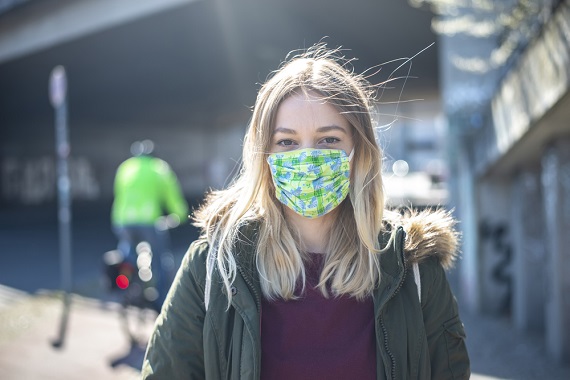It’s not yet clear when stay-at-home restrictions might be lifted – they’ll vary by state. NPR maintains a handy state-by-state list of How Each State Is Responding To COVID-19 that talks about various restrictions. But one thing is clear – until there is a vaccine for the coronavirus, we won’t be going back to life as we knew it in the foreseeable future. It’s likely that restrictions on public places will be lifted gradually and that we will still be practicing advanced hygiene, and social distancing. And more and more of us will be wearing face masks or face coverings in public places to protect ourselves and others. The CDC has recommended this practice, and many communities and states are requiring them in all or some public places.
Whether they are required or not, many health experts point to the advantages in a pandemic. We know that the people can have coronavirus for a period of time before they show symptoms; in fact, the CDC says that up to 25% of people with coronavirus may not show any symptoms at all, but they can still be shedding the virus when they cough or sneeze. A face mask protects others against this. Plus, although face coverings aren’t a replacement for other protections, they offer an additional measure of safety for the wearer, particularly in places and situations where it may be difficult to maintain 6 feet of distance.
The New York Times has a handy User’s Guide to Face Masks (They are making coronavirus-related content freely available to all). The guide has many useful tips about the various types of masks, ideas for how to make masks and where to find patterns, and a brief video of how to make an easy no-cost, no-sew reusable face mask out of an old t-shirt. They also offer tips for how to put a mask on, how take it off, and how to clean it. It pretty much covers any questions you might have and offers links to other resources.
We’ve summarized some of their best-practice mask tips as well as tips from the CDC:
- Wear a mask at all times in public spaces
- Unless you have a health condition requiring it, don’t use a surgical mask or PPE intended for healthcare workers
- Wash your hands before putting on a face mask and after taking it off
- When removing it, avoid touching the front of the mask
- A mask should cover your nose and mouth, going from near the bridge of your nose to down under your chin and stretch about halfway or more toward your ears.
- Avoid touching your face while you are wearing the mask
- Continue maintaining 6-feet of social distancing between you and others
- Wash the mask after use
Children and masks
Your young children may be afraid to see their parents, loved ones – indeed, everyone, suddenly all covering their faces. Masks could provoke fear, sadness or just general anxiety about a stressful time. The New York Times talks about children who fear masks, noting that “One reason children may find masks disconcerting is that the ability to recognize — and read — faces is much weaker in young children than it will be by adolescence.” Children start developing facial identification skills around age 6, but it’s not until about age 14 that they have fully developed this skill. The article offers ideas for how to help children acclimate to face masks by explaining how they help others. Among their suggestions are to make the association between masks and superheroes.
The CDC says that children under 2 years of age should not wear masks. Should kids above that age wear masks? While children are less likely to become seriously ill from coronavirus, they still might be infected and therefore potentially infecting others. The New York Times talks about the issue of young children wearing face makes, noting that:
Masks are most useful in public places where your child is likely to come within six feet of another person (for example in a grocery store or pharmacy) and in areas where the virus has been spreading quickly, the C.D.C. said.
They offer tips for parents about when masks are advisable and ideas for how to persuade your children to use them.
More resources on face masks
- CDC Guide on Cloth Face Coverings to Help Slow the Spread of COVID-19
- How to Stop Face Masks from Fogging Up Your Glasses
- How Not to Wear a Mask
- Answers to your DIY face mask questions, including what material you should use
- Exercising Outdoors With a Face Mask
- Where are you required to wear a face mask? More and more states, cities and towns making it a rule
Reprinted from Renaissance Alliance – no usage without permission.


